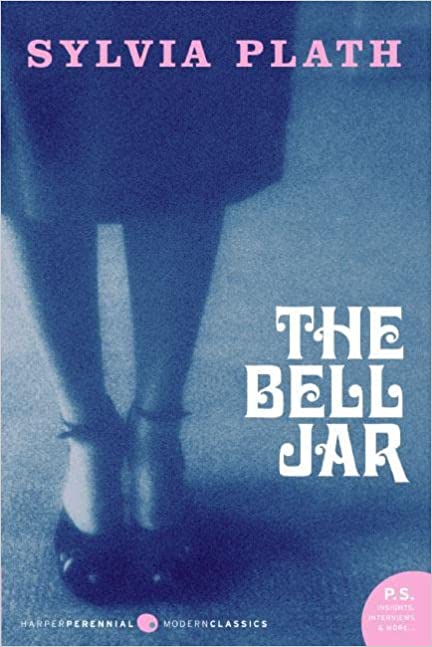
3 Sentence Summary
The Bell Jar is Sylvia Plath’s only novel, which was inspired by her own experiences with depression. The book delves into themes of identity, feminism and transformation through the story of a 19-year-old woman named Esther Greenwood. She goes through a mental breakdown and eventual recovery.
Summary Read Time: Less than 5 minutes
Actual Book Length: 294
First Published in: 1963
Below is the detailed yet quick summary of the book:
Part 1
The story follows Esther Greenwood, a highly intelligent college student who wins a month-long opportunity to work as a guest editor at a New York magazine. She stays at the Amazon, a women’s hotel, and takes part in a number of events and parties hosted by the magazine. Despite the exciting opportunity, Esther feels detached and uninspired, struggling to reconnect with her ambitious self. Throughout the story, Esther grapples with societal expectations for young women, including virginity, maternity, and wifely duties, while also struggling with her own conflicting desires for her future. She goes on a series of disappointing dates, including one that ends with a near-rape experience.
Esther’s journey highlights the complexities and struggles that women face in navigating societal expectations and finding their own paths. The story is a powerful commentary on the pressure women face to conform to traditional gender roles and the impact it can have on their self-discovery and sense of self. Through Esther’s experiences, readers are invited to reflect on their own struggles and the societal pressures they may face.
Part 2
Throughout her time in New York, Esther reflects on her past relationship with Buddy Willard, a man she once admired but now despises for his hypocritical public image. Esther plans to break up with him once he recovers from his tuberculosis. She also visits him at the sanatorium, where she rejects his marriage proposal and suffers an injury.
Back home in the suburbs, Esther’s mental health deteriorates as she is rejected from a writing course and is stuck at home. Her depression intensifies, leading to her neglecting her personal hygiene and losing the ability to sleep, read, write, or eat. She sees a psychiatrist, Dr. Gordon, who incorrectly administers electric shock treatment to her. Esther’s desperation leads her to attempt suicide multiple times, before ultimately hiding in a crawlspace and taking sleeping pills.
Part 3
After being rescued and hospitalized, Esther wakes up in a hospital and is horrified by her appearance, not recognizing herself. She is then moved to the psychiatric ward of the city hospital where she is paranoid, uncooperative, and still suicidal. Eventually, a wealthy novelist, Philomena Guinea, sponsors her move to a private asylum where she is treated by the compassionate Dr. Nolan and enjoys comforts and freedoms that the city hospital lacked. The doctors arrange to cut off Esther’s steady stream of visitors, who have been exhausting Esther with their advice and inaccurate theories about depression.
As Esther’s condition improves, she earns more freedom to come and go from the asylum and she uses these privileges to buy a diaphragm and to lose her virginity in a one-night stand with a math professor, Irwin. With the encouragement of Dr. Nolan, Esther has learned to embrace her independence as a woman and shake off the stifling social expectations she used to feel constrained by. Unfortunately, her loss of virginity results in painful hemorrhaging and she discovers her friend Joan having an affair with another patient, DeeDee, and contemplates lesbianism which she doesn’t have an attraction to.
Soon afterwards, Joan hangs herself. Buddy visits Esther at the asylum and Esther gets closure on their relationship. Esther feels stable and prepares to return to college, though she knows the bell jar of mental illness could descend on her again at any time. The novel ends as Esther enters a last interview with the doctors before returning to college.





